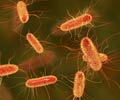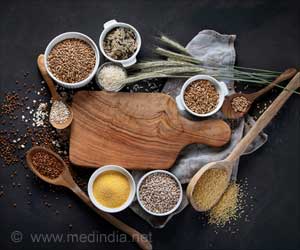Hospitals and residential buildings across Mumbai are sharing the dreaded E. coli bacteria in their water supplies.
E. coli, a micro-organism is found only in sewage and responsible for a spate of colicky diseases. The bacteria have been flowing freely through water taps since rains lashed the city this monsoon season. Poor infrastructure ensures that water contamination does not spare anyone, affecting even high-ranking civic health officials who live in the Worli colony.Soaring to almost 20% (of all surveyed samples) during the monsoon from the usual 9% (as listed in the BMC’s environmental status report, 2007), water contamination has worsened Mumbai’s maladies during the rains. Around 20 suspected cholera cases detected in Wadala and Antop Hill in July comprise only one instance of how E. coli-tainted water can wreak havoc with the human body.
In G South ward, which includes the Worli trouble spot, 948 patients of diarrhea and vomiting have found their way to BMC dispensaries in the last few months. Another 932 have been found ailing in their homes during door-to-door surveys in Andheri.
Mumbai’s water contamination problems have become so routine that senior officials do not even seem to care. “E. coli is worrisome because it can lead to diarrhoea, gastroenteritis and even cholera. It is not uncommon in Mumbai, especially during the rains,’’ is the oft-heard comments from the BMC .
The civic body’s water analysis survey for July 2007 states that 15 of the samples put through bacteriological examination were “unfit for potable purposes’’. Yet, this does not doesn’t shock anymore; health officials are quick to offer solutions such as chlorine tablets and an advice to “boil water’’.
In 2003, a report by NGO Socleen, commissioned by the MMRDA, showed that 16% of the city’s water supply was contaminated. Now, in September 2007, matters have barely changed.
Advertisement
“But an analysis again found E. coli in the water,’’ quotes an un-named civic official. Now BMC officials are wondering if the slums next to the colony have anything to do with the E. coli in the building’s water supply.
Advertisement
The water mains outside Kasturba Hospital, Chinchpokli, and the storage tank at M T Agarwal Hospital in Mulund harbor an ‘infinite’ amount of coliform bacteria as well as E. coli bacteria. This is the same with the TNMC Nair Girls’ hostel in Haji Ali, which is also run by the municipal corporation.
The water analysis report drawn up monthly after testing approximately 4,000 samples shows that south Mumbai, too, has a chronic contamination problem. In July this year, bacterial contamination stood at 40.59 per cent (of all samples surveyed) in E ward or Byculla, 34.29 per cent in C ward or Churchgate and 27.03 per cent in F North or Parel.
“Our pipes here are over a hundred years old,’’ says civic hydraulic engineer M Kamble, explaining the mess in south Mumbai.
The problem, as executive health officer J Thanekar pointed out, was that water and sewage lines used to be laid close to each other earlier. “During floods, some sewage water could find its way to the drinking water pipes,’’ he surmises. Like the southern parts of the city, Mumbai’s north has its main contamination sites as well. In August 2007, L ward or Kurla recorded 25% contamination while S ward or Bhandup recorded 36.25%. Yet, Kamble believes the situation, although widespread, remains under control.
“Contamination is a reality because of our intermittent water supply and is possible due to cracked and old pipelines,’’ says Kamble, adding that the BMC takes prompt action by identifying leaks and flushing out pipes whenever they receive a complaint. Kamble denied any knowledge of problems plaguing the BMC staff colony at Worli. “We haven’t heard of any water contamination there,’’ he maintained. But other officials concede, off the record, that contamination is a major problem all over Mumbai.
A student at Nair Hospital’s hostel in Haji Ali admitted that a water filter was installed recently on the premises after repeated complaints of gastroenteritis infections was reported among the inmates.
According to the World Health Organization (WHO), coliform bacteria should be less than 10 per 100 ml of piped water and there should be no E. coli at all. But in Mumbai, the WHO recommendations for safe water are followed only up to the limits of the Bhandup water purification plants. Once the water is distributed along a 4,000-km-long network, contamination begins to seep in.
Source-Medindia
ANN/C








